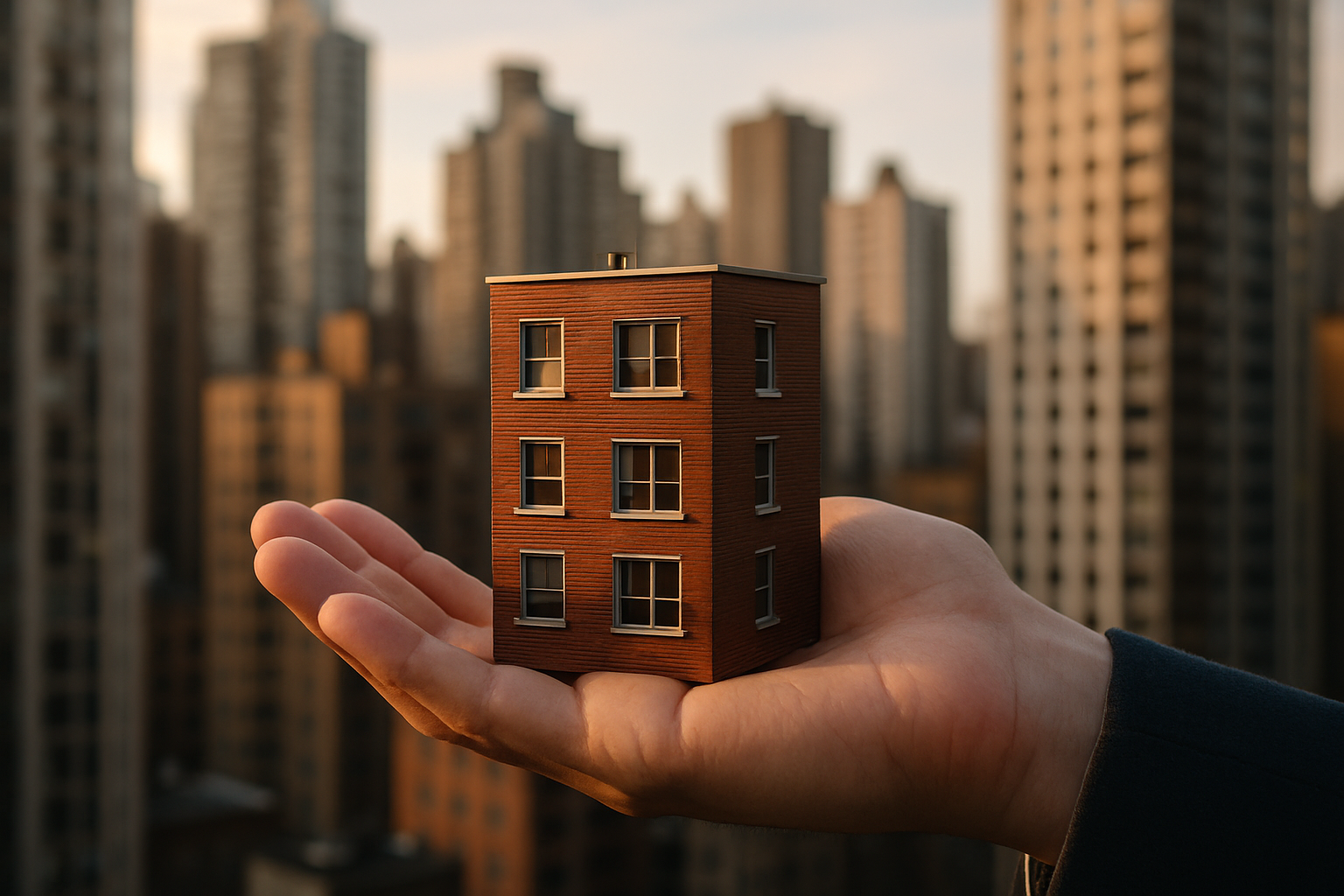Title: Adaptive Reuse: Transforming Industrial Spaces into Residential Gems
An innovative trend is reshaping urban landscapes across the globe: the conversion of industrial buildings into unique residential spaces. This adaptive reuse strategy not only breathes new life into abandoned structures but also offers a sustainable solution to housing shortages in densely populated areas. As cities grapple with limited space and rising property costs, developers and homebuyers are turning to these character-rich conversions as an attractive alternative to traditional housing options.

Historical Context and Key Developments
The idea of adaptive reuse in real estate is not entirely new. In the 1960s and 1970s, artists in New York City began to occupy abandoned industrial spaces in SoHo, transforming them into live-work studios. This grassroots movement laid the foundation for what would become a widespread phenomenon in urban development.
Over the decades, the concept has evolved from informal occupancy to large-scale, professionally executed projects. Cities like London, Berlin, and Melbourne have been at the forefront of this trend, with numerous successful conversions attracting both residents and investors.
Current Market Trends and Financial Insights
The industrial-to-residential conversion market has seen steady growth, with a compound annual growth rate (CAGR) of approximately 8% between 2015 and 2020. This growth is expected to continue, driven by increasing urbanization and the need for innovative housing solutions.
From a financial perspective, these projects can be highly lucrative for developers. While initial renovation costs may be higher than traditional construction, the unique character and often prime locations of industrial buildings allow for premium pricing. Additionally, many governments offer tax incentives and grants for adaptive reuse projects, further enhancing their financial viability.
Advantages of Industrial-to-Residential Conversions
One of the primary benefits of these conversions is the preservation of architectural heritage. Many industrial buildings boast distinctive features such as high ceilings, large windows, and exposed brick or concrete, which are highly sought after in residential spaces.
From an environmental standpoint, adaptive reuse is inherently sustainable. It reduces the need for new construction materials and minimizes demolition waste. Studies have shown that renovating existing buildings can reduce carbon emissions by up to 50% compared to new construction.
For residents, these spaces offer a unique living experience. The blend of historical character and modern amenities creates a one-of-a-kind atmosphere that is increasingly valued in today’s housing market.
Challenges and Considerations
Despite the many advantages, industrial-to-residential conversions come with their own set of challenges. Developers must navigate complex zoning regulations, as many industrial sites are not initially zoned for residential use. Environmental concerns, such as potential contamination from previous industrial activities, must also be addressed.
The renovation process itself can be complex and costly. Older buildings may require significant structural upgrades to meet modern building codes and safety standards. Additionally, integrating modern systems like HVAC and plumbing into existing structures can be technically challenging and expensive.
Impact on Urban Development and Real Estate Markets
The trend of adaptive reuse is having a profound impact on urban development patterns. It’s revitalizing formerly neglected industrial areas, often sparking wider neighborhood regeneration. This can lead to increased property values in surrounding areas, benefiting both homeowners and investors.
For real estate markets, these projects introduce a new category of housing that bridges the gap between traditional residential properties and unique, boutique living spaces. This diversification can help stabilize local real estate markets by appealing to a broader range of buyers and renters.
Case Studies: Successful Conversions
Several notable projects illustrate the potential of industrial-to-residential conversions. In London, the Battersea Power Station redevelopment has transformed an iconic industrial landmark into a thriving residential and commercial hub. In New York, the conversion of the former Domino Sugar Refinery in Brooklyn is creating hundreds of new homes while preserving elements of the site’s industrial heritage.
These projects demonstrate how adaptive reuse can not only provide housing but also become catalysts for broader urban regeneration.
Future Outlook and Emerging Trends
As the demand for unique urban living spaces continues to grow, the industrial-to-residential trend is likely to evolve further. We can expect to see more innovative approaches to design and functionality, such as the integration of smart home technologies and sustainable energy systems.
There’s also potential for this concept to expand beyond traditional industrial buildings. Abandoned office buildings, shopping malls, and even parking structures are being eyed as potential candidates for residential conversion, especially in the wake of changing work and shopping habits post-pandemic.
Conclusion: A Sustainable Path Forward
The transformation of industrial spaces into residential properties represents a creative and sustainable approach to urban development. It offers a unique solution to housing shortages while preserving architectural heritage and reducing environmental impact. As cities continue to evolve, these adaptive reuse projects are likely to play an increasingly important role in shaping the urban landscape and redefining what we consider home.
For investors, developers, and homebuyers alike, industrial-to-residential conversions offer exciting opportunities. They represent not just a trend, but a fundamental shift in how we approach urban living and real estate development. As we move forward, these innovative projects will continue to breathe new life into our cities, creating vibrant, sustainable communities for generations to come.





